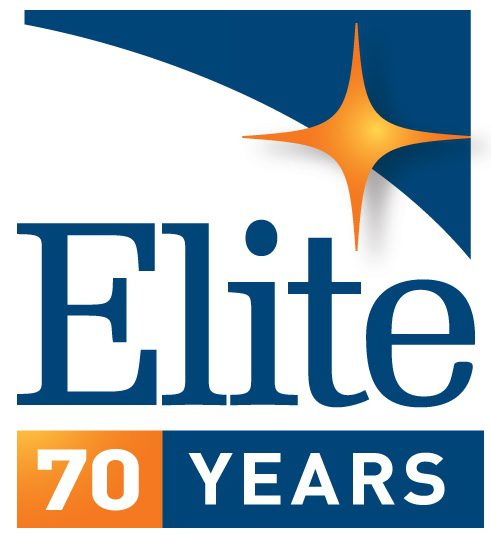September 8, 2019
By Pat Hall, Elite’s Military & Commercial Aerospace EMC Team Leader
On October 15th, Elite is hosting our annual IEEE EMC Society Oktoberfest chapter meeting with the presentation topic on radio frequency (RF) shielding. RF shielding seems pretty straightforward – you apply to metal, foil, or a coating around a product to control the RF environment, and “bang,” EMC problems are solved! However without a good understanding of how shields work, applying them successfully to mitigate EMI problems can be a frustrating challenge.

Here at Elite we regularly measure shielding effectiveness (SE) for internal needs and for our clients. Making accurate measurements is a challenge because shields have many different shapes and purposes. For example, housings, connectors, or cables all use shields and each application requires a unique test fixture to ensure accurate and repeatable SE measurements.

Our most common request is to measure SE for connectors and cables. For these products, we primarily use two techniques, the Triaxial Fixture Method and the Mode-Stirred Method. Here’s a brief overview of how they work and a few words of advice.
Tri-axial Fixture Method 100MHz to 1GHz
In essence with the tri-axial method, we create a smaller diameter coaxial cable within a larger diameter coaxial cable. The smaller inner coaxial cable itself is a single conductor centered with dielectric spacers within a length of brass tubing. The single inner conductor terminates within the brass tube to a 50-ohm resistor with the other side of the resistor connected to the inside surface of the brass tube, which in turn becomes the RF return path.


The brass tube has a cutout section where connector adapters are soldered to mount the connector under test. The adapters are specially made for each connector type and size. It’s within the inner diameter of the brass tube (and connectors) that we apply an RF signal. Any RF that escapes the assembly is collected within the space of the larger coaxial assembly and measured by a receiver at the opposite end of the tri-axial fixture. The outer surface of the inner coaxial assembly now becomes the center coaxial pin of the larger coaxial assembly and the input conductor to the measurement receiver.


The larger coaxial assembly has a rear section designed to slide along the length of the coaxial assembly. As it slides it makes electrical shorting contact between the larger and smaller tubes. During the measurement, the sliding assembly is moved back and forth along the axis of the fixture to account for resonances and positioned so that the received signal is maximized. The difference in amplitude between the signal generated at one end of the triaxial fixture and the signal measured at the other end of the fixture is used to calculate the shielding effectiveness of the connector.


Mode-Stirred Method 200MHz -18GHz
For evaluating shielding using the mode-stirred method we configure the two ends of a connector assembly each to a length of semi-rigid coax. The assembly is then connected to a reverb shielded chamber wall panel having feed-through connectors. On the outside of the chamber, one end of the connector test assembly is mated to a 50-ohm load and the other end to a measuring receiver.
To make the SE measurement, an RF signal is injected into the mode stirred chamber and measured at the reference antenna. The same signal is also measured by the receiver connected to the connector under test. The difference in readings between the reference and the connector under test provides the data for the SE calculation. During the test, the mode stirrer is rotated while taking measurements. Below 2GHz typically 200 measurements are made per revolution and above 2GHz 3000 readings are taken.


Tips for Successful SE Measurements
To help make your connector shielding effectiveness test more of success I recommend the following steps:
- The most important step for the mode-stirred test is to ensure no RF leakage occurs at any of the fixturing points and that any leakage only occurs at the connector mating interface.
- We recommend contacting Elite early in the project so we can help develop the semi-rigid coax interface assembly in a manner that will ensure an accurate test. Semi-rigid is truly the best for fixturing and is far superior to flexible cable and standard connectors.
- Provide a reference cable, meaning one continuous length of the cable without the connector in place. With a reference cable, we can determine the best possible performance of the measurement system since there is no connector in the test. Having the reference cable will help us establish the dynamic range for the measurement.
- Provide the connector under test with threads and mating surfaces having materials and surface finishes that are suitable for soldering to rigid coax. It’s very difficult to solder to a stainless steel or aluminum connector or connectors that have a plating finish.
To get a quick technical overview of shielding theory and the practical application of shields, I recommend the free LearnEMC tutorials on Shielding Theory and Practical EM Shielding.

For more information about how Elite can help you evaluate your connectors or cables for shielding effectiveness, please give me a call to discuss your questions.
Pat Hall
Sr. EMC Engineer
iNARTE Certified EMC Engineer
Military & Commercial Aerospace EMC Team Leader
Email
(630) 495-9770 ext. 104
